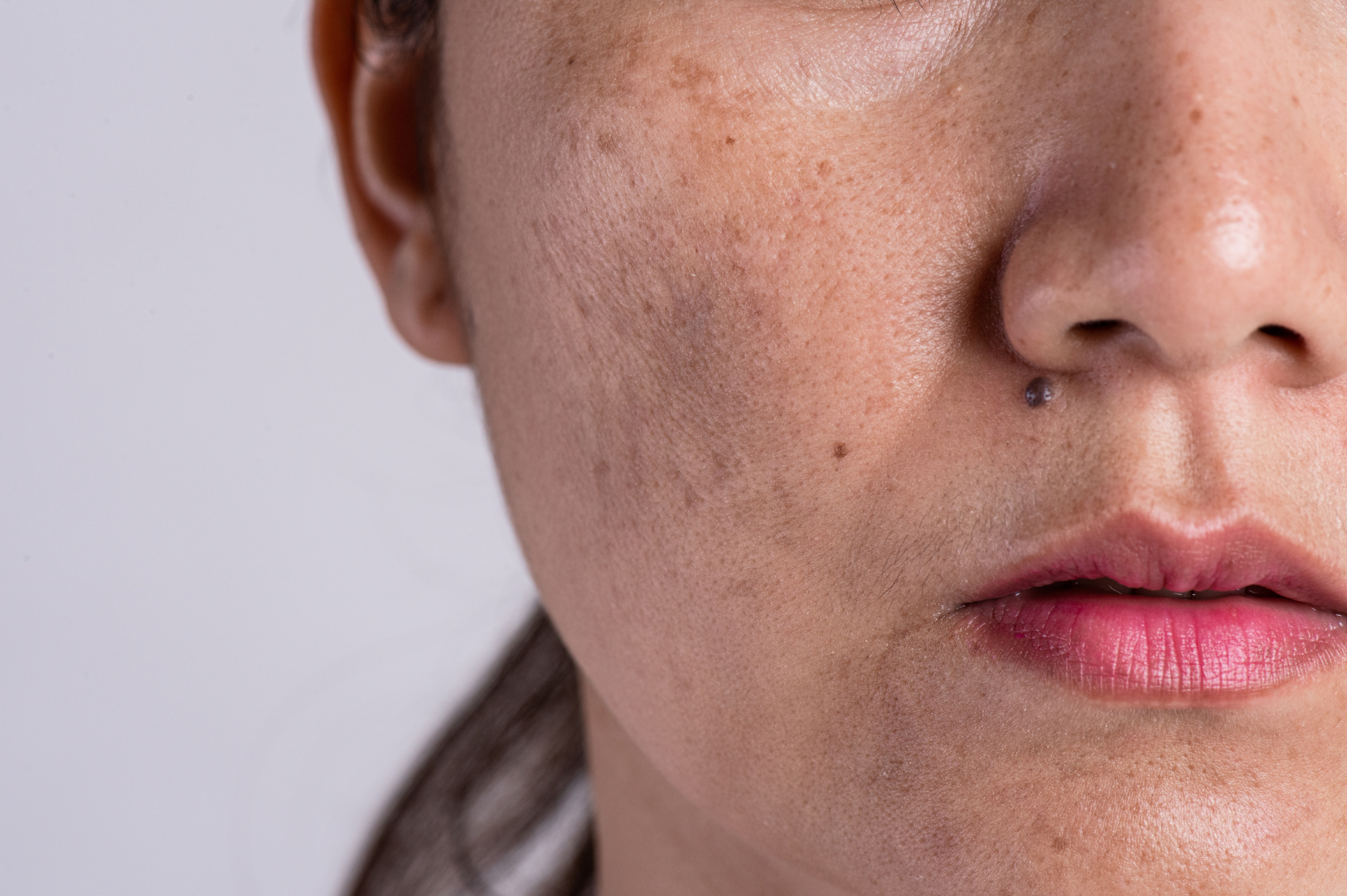
Melasma is a challenging skin condition characterized by brown patches of hyperpigmentation on your face. This could be a cause of concern for many since it can look unaesthetic, resulting in distress and low self-esteem. Melasma is often caused due to unusual hormonal fluctuations, and exposure to harmful radiations, though there could be other causes to it. A thorough diagnosis is essential to confirm Melasma since it may be confused with other skin conditions. If you notice any dark, blotchy patches on your face, it is time to see a dermatologist immediately. This informative blog lets you learn everything about Melasma and know when to seek medical help.
Melasma, “dark spots,” is a common skin condition with light or dark brown or blue-gray patches on your face. These freckle-like spots are commonly seen among dark-skinned women in areas including your cheeks, lips, forehead, nose, and forearms. Melasma is sometimes referred to as the “mask of pregnancy” because it frequently affects pregnant women (about 15 to 50%).
Dermatologists classify Melasma based on the depth of pigmentation using a special device called Wood’s Lamp that emits a black light. There are three types of Melasma, including:
Radiation in the form of UV (ultraviolet), visible or infrared (heat) light, and hormonal changes are considered to be the prime culprits in developing Melasma. A malfunction of the melanocytes (pigment-forming cells) causes them to produce excess pigment (melanin) in certain areas that appear darker than your skin tone.
Elevated levels of estrogen and progesterone can play a significant role in the overproduction of melanin, resulting in Melasma.
Hyperpigmentation is a primary symptom of Melasma that appears light to dark brown or gray. These patches are often flat and slightly darker than your skin tone.
Melasma patches are usually painless and do not cause any itching or inflammation. You can find these patches on the following areas of your body:
Furthermore, melasma patches on your face can be bothersome since they may negatively impact your appearance, leading to psychological effects like low self-esteem, stress, anxiety, and depression.
Your dermatologist can identify melasma patches by visually examining the affected area. Recording your medical history can also give a clue about your family history and amount of sun exposure. Your doctor may also perform some tests to rule out specific causes and differentiate Melasma from other skin conditions.
Wood’s Lamp examination is a diagnostic test that uses a special light near your skin. It helps detect bacterial and fungal infections and determine how many layers of the skin are affected by hyperpigmentation.
Your doctor may also recommend a skin biopsy to rule out other skin conditions. This test involves removing a small piece of the affected skin and studying it under a microscope.
Treatment for Melasma usually depends on the cause. Patches that appear due to hormonal changes, such as during pregnancy, may fade after delivery. Melasma due to oral contraceptives may also resolve once you stop taking the pills.
However, treatment for Melasma due to other causes may include:
Remember, not all treatments work for everyone, and Melasma can reappear even after successful treatment.
If you have or have had Melasma, be sure to follow the preventive tips to protect your skin and avoid the following:
Melasma is a common, painless, and harmless skin condition that can be challenging to treat. The dark, blotchy patches on your skin can make you self-conscious, resulting in low self-esteem. You can take several treatment options and preventive measures to manage Melasma. Seek help from a qualified dermatologist to voice your concerns and get help.